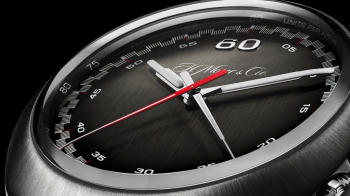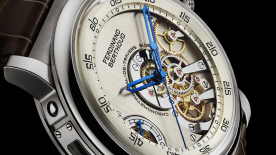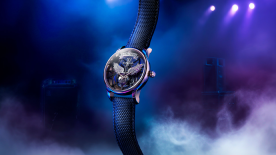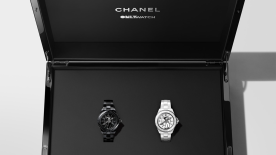Any two watches that belong to the family might be very different in appearance, although they are still cousins.
If you tell someone you’re into sport, the obvious follow-up question is always “Which one?” And that’s because the term “sport” is so broad that it’s often impossible to guess exactly what it means. The same applies to sports watches: What type? A diver? A motor racing watch? All-terrain? Vintage? Sports-chic? Thankfully, they all share some common characteristics.
Shared DNA
Sports watches are, above all, robust. Contrary to popular misconception, a chronograph function is not always necessary: the Breitling Navitimer was used by pilots, not by athletes. Nevertheless, sports watches are required to meet a minimum level of water fastness (ideally 10 ATM) and have a case that can withstand a few knocks.
Some complications are therefore best avoided; moon phases, for example, are unnecessary for sport, and tourbillons are too fragile. The same applies to cases in metals not ideal for physical activity (e.g. platinum), or those that have no crown protector. And while we’re at it, let’s bust one particularly pervasive myth: there’s no such thing as a vintage sports watch. These pieces are better thought of as collectors’ watches, given that they can no longer be relied upon to perform as they did back in the day – not to mention that standards for shock and water resistance have changed. Their movements have aged, and their plexiglas crystals have become delicate. But within these limitations there is nevertheless a vast selection.
Love triangle
A single sports watch might veer towards a more classic, technical and/or functional appearance, or it may have particular refinements depending on its intended use (motor racing, sailing, etc.). For example, Michaud’s stores in Neuchâtel and Verbier have chosen to spotlight the new Defy El Primero 21 by Zenith. The essence of the watch is vintage – the original was released in 1969. Its design, however, is extremely modern: titanium case and ceramic bezel, with a resolutely contemporary 44 mm diameter, and a depth rating of 10 ATM. The movement is also very much up-to-date. It is equipped with twin regulating organs and escapements – one for the watch (5 Hz) and the other (50 Hz), for the chronograph, which displays elapsed time to the nearest 1/100th of a second.

It’s an interesting exercise to compare it with the Streamliner by H. Moser & Cie. They may both be classed as sports watches, but they have virtually nothing in common! The first is made by a major group; while the Moser comes from a 100% independent, family-run business. The former was designed in 1969, the latter in 2019. The Zenith has opted for a very 21st-century aesthetic, while the design of the Moser, which is actually a 21st-century watch, is inspired by the ’60s and ’70s. The Defy has a COSC chronometer certification, and the Streamliner doesn’t. The first is part of the current collection, while the second is produced in a limited series of 100. And while they both feature a chronograph function, their approach is radically different.

The Streamliner chronograph is more atypical, both visually and technically. And indeed, the technical and aesthetic considerations are intimately connected. The calibre is designed in a doughnut shape, offering just hours and minutes natively. The centre contains an additional module, which is the chronograph. That’s what makes the Streamliner a rare example of a chronograph with a central display. Both the elapsed minutes and seconds feature a flyback function. Could this be a motor racing reference? Probably. But you’re free to use it as you wish.
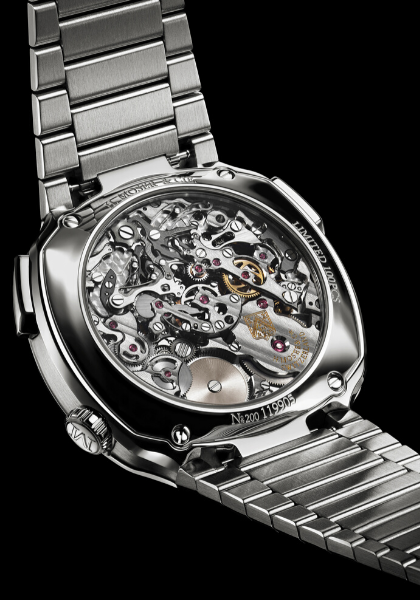
Some Rolex chronographs, on the other hand, leave you in no doubt as to their intended use. That’s the case of the Yacht-Master II, another Michaud pick, designed specifically for regattas. Its sporty credentials are there for all to see, inside the case made of Oystersteel. This alloy, produced exclusively for Rolex, is forged under a vacuum, which removes any impurities that could reduce its resistance to corrosion, or mar the purity of the finish. It is water resistant to 10 ATM. The Cerachrom bezel is connected to the movement, which is what gives the Yacht-Master II its countdown function. The countdown can be programmed for any time from 1 to 10 minutes, according to the specific start sequence of any given sailing regatta. The chosen setting is retained in the mechanical memory, which means that there’s no need to readjust the watch once it reaches zero. The manufacture movement is COSC certified, as well as having its own Rolex certification (Chronomètre Superlatif). You can’t have too much of a good thing.
